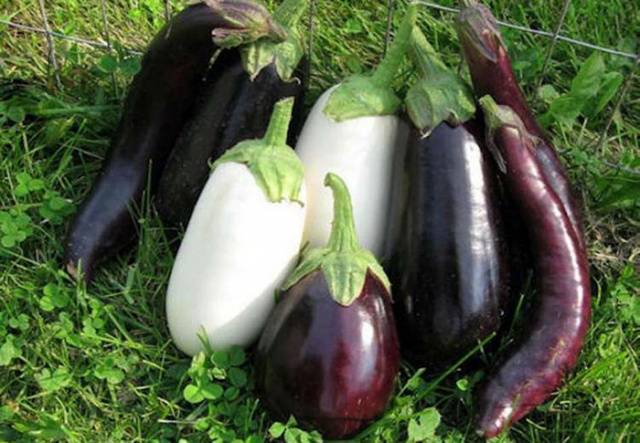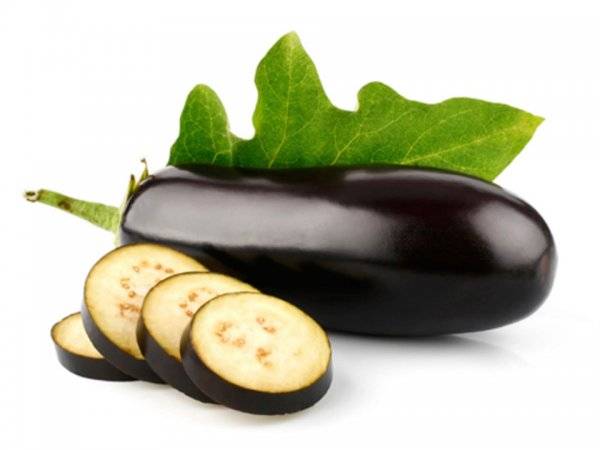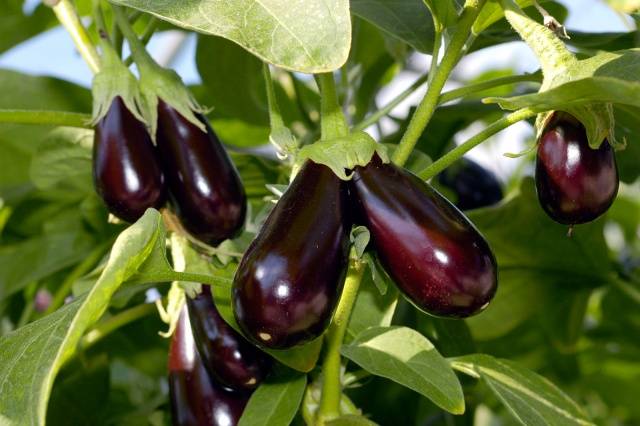Content
Eggplant, like tomato or pepper, is a nightshade crop, only more heat-loving and capricious. In our country, it became widely used less than two centuries ago, although it has been growing in Europe since the fifteenth century. The color of eggplant varies from white to almost black, the size of the fruit ranges from 30 g to 2 kg. We are used to growing and eating medium-sized purple fruits.
Eggplant is called a long-living vegetable; it is indicated for the diet of elderly people, patients with cardiovascular diseases, promotes weight loss, and helps with diseases of the liver, gastrointestinal tract, and kidneys. This is a real storehouse of useful substances. It is grown exclusively through seedlings, and outside the greenhouse, eggplant grows only in the southernmost regions; in the rest of the territory, its cultivation requires closed ground. Feeding eggplants in a greenhouse is one of the decisive factors for obtaining a good harvest; this will be the topic of our article.
What do eggplants need?
As already noted, eggplants are very demanding on growing conditions. For development and fruiting they need:
- rich in organic matter, water- and breathable, loose soil with a neutral reaction;
- wet air;
- abundant watering;
- warm;
- Sun;
- increased doses of nitrogen fertilizers.
They don't like eggplants:
- poor, acidic, dense soils;
- cold nights;
- sudden temperature fluctuations;
- cold water;
- transfers;
- drought.
The ideal temperature for growing them is 23-27 degrees. At a temperature of 12-14 degrees, eggplants stop growing and stop developing; at 6-8 degrees, irreversible physiological changes occur in them, and at zero they simply die.
High temperatures will also not be beneficial - even when the thermometer rises above 35 degrees, pollination does not occur.
Growing eggplants in a greenhouse
Most often, eggplants are grown in closed ground - greenhouses or greenhouses.
Why is it better to grow eggplants in greenhouses?
Farms aimed at obtaining a good, stable harvest containing pesticides, herbicides, nitrates and other harmful substances within acceptable limits grow eggplants only indoors. This is due to the fact that even the southernmost regions of Russia are not located in the subtropics; temperature fluctuations there are not uncommon. In recent years, abnormally high temperatures in summer, rains that sometimes last for weeks, sometimes not at all, simply do not allow finicky and delicate eggplants to develop normally in open ground.
And the Colorado potato beetle loves this crop, perhaps even more than potatoes.The famous Prestige, which helps us still get normal potato yields, spreads up the plant. This allows you to obtain a potato crop that is not contaminated with pesticides. With eggplants, the fruits of which are located above the surface of the soil, everything happens exactly the opposite. If you soak the roots of seedlings in Prestige, then no matter what anyone says, its residual quantities remain in the fruits.
The biological product Actofit does not have a systemic effect and its effectiveness drops sharply in rainy summers. In greenhouse conditions, the drug works well.
So, in open ground, eggplants are threatened by natural disasters, to which tomatoes and peppers react poorly. Even if you are lucky, the summer will not be cold or hot, without sudden changes in temperature, with an even distribution of precipitation, then you can only fight the constant invasion of Colorado potato beetles in the open ground with lethal drugs.
If a summer resident or rural resident who grows several dozen or even a hundred bushes can, if desired, collect pests manually, then in large farms this is simply impossible and even unprofitable. Besides, if eggplants were grown in the ground for their own consumption, and then they took it and disappeared, what will we do? That's right, let's sigh and go to the nearest market or supermarket to make preparations for the winter and treat ourselves to delicious dishes made from fresh fruits. And for farms, this can threaten ruin.
So it turned out that in our greenhouses it is more reliable to grow eggplants, and therefore more profitable.In addition, this is a rare case when greenhouse vegetables grow environmentally friendly in closed ground (at least much cleaner than in open ground).
Variety selection
The choice of eggplant honeycombs for greenhouses should be approached differently from the way we choose tomatoes or peppers. This vegetable is not eaten raw, so taste qualities when choosing a variety play not even a secondary, but a tertiary role. It's easy to season dishes with spices or improve their taste in other ways.
Eggplant is a very capricious crop; it is worth paying attention to the resistance of the variety or hybrid to diseases, adverse environmental influences and the possibility of growing in a greenhouse. Hybrids should be preferred over varieties due to their productivity.
Pollination
Separately, it should be said that in greenhouses, eggplants will have to be pollinated by hand. Of course, if there is an apiary nearby, such a problem will not worry you. A good result is obtained by removing the leaves covering the flowers and then shaking the bushes.
There are drugs that promote pollination and fruit formation. If greenhouse eggplants bloom poorly, it is recommended to spray them with boric acid. To do this, 1 g of powder is diluted with 5 liters of water.
Fertilizer requirements
The agronorm for eggplant is only 15 g per square meter. This means that the crop needs a minimum amount of fertilizer and cannot be overfed. But it would be a mistake not to fertilize greenhouse eggplants at all - you will be left without a harvest. It is important to maintain a balance here and give the plant exactly as many nutrients as it needs when feeding.
Greenhouse eggplant needs phosphorus and potassium all season, but their effectiveness will be minimal without introducing sufficient doses of nitrogen fertilizers into the soil.
Nitrogen fertilizers
Plants need nitrogen fertilizing to increase green mass and photosynthesis. Its deficiency entails a slowdown in growth, and the leaves first lighten and then turn yellow. If nitrogen fertilizers are not immediately applied to the soil, they will fall off, which will certainly lead to weakening of greenhouse eggplant bushes and a decrease in yield.
However, excessive doses of nitrogen fertilizing lead to increased leaf growth due to flowering and fruiting, and the immunity of eggplants is reduced.
Feeding with phosphorus
Fertilizers containing phosphorus promote the formation of buds, flowering, fruiting, seed setting, accelerate the growth of the root system and ripening of the crop. Phosphorus supplements are especially needed for young plants during bud formation. But this element is well absorbed only by adult greenhouse eggplants, so in the early stages of development it is better to give phosphorus to the plant with foliar feeding.
The leaves pointing upward indicate a lack of phosphorus fertilizers.
Potash fertilizers
Fertilizers containing potassium promote the accumulation of carbohydrates, which significantly improves not only the quantity, but also the quality of fruits. Potassium fertilizers are directly involved in the fertilization of the ovary and the formation of fruits, and increase the plant’s resistance to disease.
The leaves are the first to signal a lack of potassium supplements - they turn inward, form a brown border along the edge, and then dry out.If this nutrient is not enough during fruit ripening, brown spots form on them.
Feeding with microelements
Although the lack of microelements in the nutrition of greenhouse eggplants is not so fatal, with a deficiency of iron and manganese, young leaves develop chlorosis, and with a lack of magnesium, old leaves develop. For normal development of the root system and for the successful formation of buds and fertilization, copper, molybdenum, and boron are needed.
Microelements are best absorbed by plants through foliar feeding, so they should never be neglected.
Fertilizing eggplants in a greenhouse
Although eggplants take little fertilizer from the soil, fertilizing cannot be ignored, especially when grown in greenhouses. This vegetable responds very well to organic matter; if you have the opportunity, try to replace mineral fertilizers with ash and mullein as much as possible.
Soil fertilization
Fertilizing greenhouse eggplants begins with autumn soil preparation. Apply 1/2 to 2/3 of a bucket of organic fertilizers - compost or humus - per square meter of area and dig up the soil to a shallow depth. It is best to apply ash directly during planting of seedlings, adding a handful of powder to the hole, mixing with soil and filling with water.
Root feeding
Eggplants do not respond well to transplants; they take root approximately 20 days after planting the seedlings in the greenhouse. It is then that the first feeding is given.
How and when to feed eggplants
During the entire growing season, greenhouse eggplants are fertilized 3 to 5 times.
- The plants are fertilized for the first time after the root system has been restored after transplantation.It is best to add 3 tbsp to a bucket of water. spoons without a slide of azofoski. At the same time, 0.5 liters of fertilizer are consumed per bush.
- When the ovaries appear, you need to fertilize the greenhouse eggplants a second time. At this stage, it is important to feed with phosphorus and potassium, and you can also use various infusions. Usually for the second feeding they take ammonium nitrate - 2 teaspoons, potassium chloride - 1 tbsp. spoon, superphosphate - 2 tablespoons per 10 liters of water.
- At the very beginning of fruiting, feed greenhouse eggplants with nitrogen and potassium. To do this, simply double the amount of these fertilizers in the working solution.
If fruiting is prolonged, two more mineral supplements are given for eggplants in the greenhouse. Starting from the moment the ovaries form, organic fertilizers of the soil without adding a mineral complex can be carried out every two weeks, trying to carefully dose the infusions.
Some sources advise those with a greenhouse equipped with drip irrigation to add a weak solution of fertilizer when watering weekly.
Organic fertilizers
The best fertilizers for eggplants are organic. To prepare them, bird droppings, mullein or weeds are fermented for a week, after cutting off the roots. To do this, fill a bucket of organic matter with 3 buckets of water, place it in a warm place and mix from time to time.
For fertilizer, mullein infusion is diluted with water in a ratio of 1:10, bird droppings - 1:20, herbal infusion - 1:5. Add a glass of ash to the fertilizing bucket and stir well.
Foliar feeding
Foliar fertilizers can be combined with treatments for greenhouse eggplants against pests and diseases. They are intended primarily to feed the plant with microelements or urgently add one or another macronutrient, since they act directly on the leaf. Usually the results of fertilization are visible the very next day.
Conclusion
Eggplants are not an easy crop to grow, but if you achieve a good harvest, you can rightfully be proud of yourself. Have a good harvest!






















